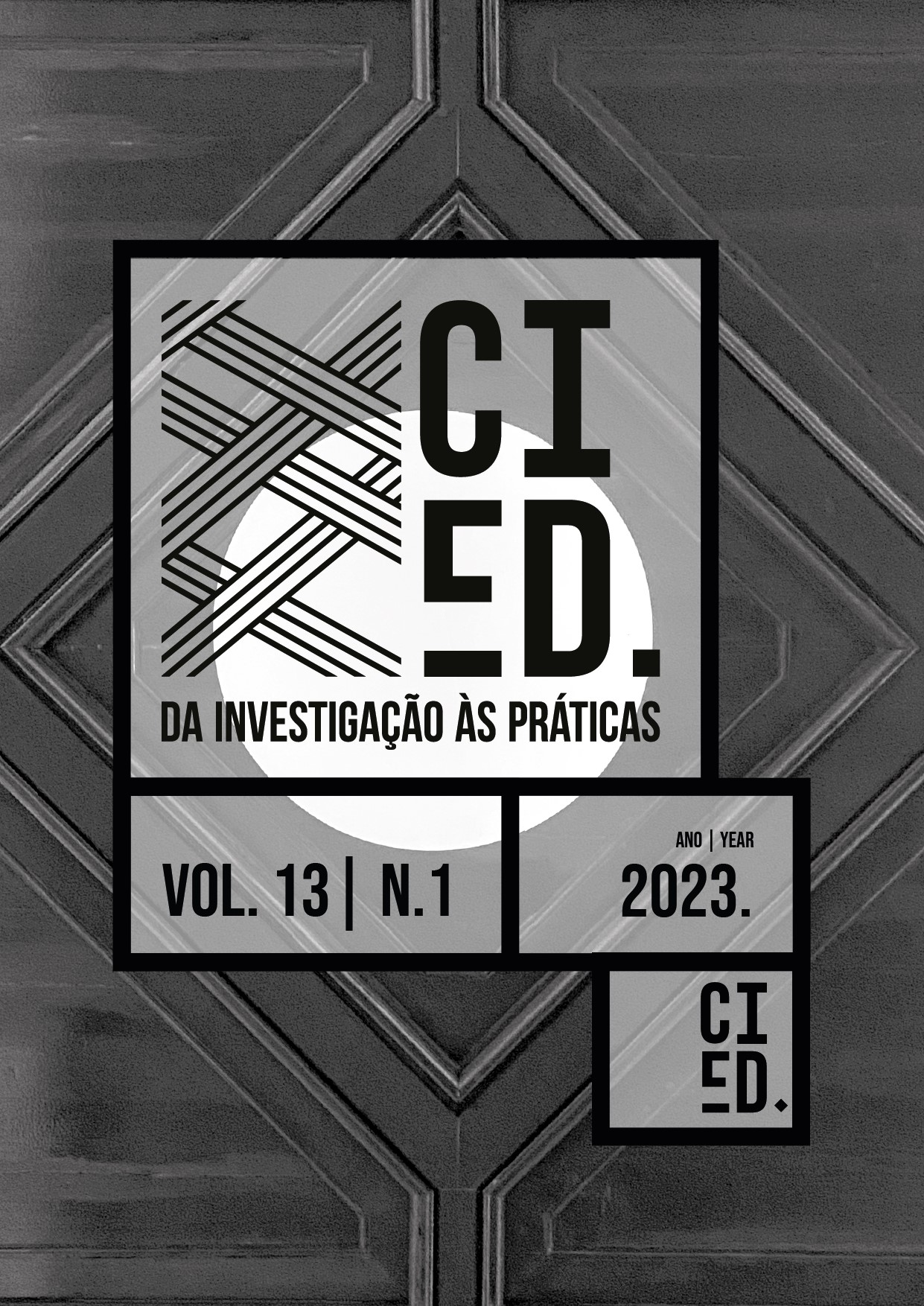The graphing calculator in basic education with the contribution of the Semiotic Mediation
DOI:
https://doi.org/10.25757/invep.v13i1.343Keywords:
Graphing calculator, Semiotic potential of the artifact, Usage schemes, Instrumented action schemes, Semiotic mediationAbstract
This article aims to analyze the resolution of an exploratory Geometry task, with the mediator artifact, graphing calculator. We sought to understand how the student promoted artifact signs through the development of usage schemes and instrumented action schemes. Later, in the collective discussion, we sought to analyze how the teacher promoted the transition from artifact signs into mathematical signs. Using a qualitative research methodology of an interpretive and descriptive nature, a case study modality was used focusing on the work of two pairs of students. The results show that the graphing calculator worked as an instrument of semiotic mediation and the teacher’s orchestration in the collective discussion was essential to the development of the semiotic potential of this artifact, resulting in the construction of mathematical knowledge.
Downloads
References
Bartolini Bussi, M. G. (1998). Verbal interaction in mathematics classroom: A Vygotskian analysis. In H. Steinbring, M. G. Bartolini Bussi, & A. Sierpinska (Eds.), Language and communication in mathematics classroom (pp. 65–84). NCTM.
Bogdan, R. C., & Biklen, S. K. (1994). Investigação qualitativa em educação. Uma introdução à teoria e aos métodos. Porto Editora.
Bruner, J. (1999). Para uma Teoria da Educação. Relógio D’Água.
Bussi, M.G.B., & Mariotti, M. A. (2008). Semiotic mediation in the mathematics classroom: artifacts and signs after a Vygotskian perspective. In L. English, M. Bartolini Bussi, G. Jones, R. Lesh, & D. Tirosh (Eds.), Handbook of International Research in Mathematics Education, second revised edition (pp. 746-783). Lawrence Erlbaum. http://www.cfem.asso.fr/actualites/bartolini-mariotti_handbook.
Creswell, J. W. (2012). Educational research, planning, conducting, and evaluating quantitative and qualitative research. (4 th ed.). Pearson.
Drijvers, P., & Trouche, L. (2008). From artifacts to instruments: A theoretical framework behind the orchestra metaphor. In G. W. Blume & M. K. Heid (Eds.), Research on technology and the teaching and learning of mathematics: Vol. 2. Cases and perspectives (pp. 363–392). Information Age. https://doi.org/10.1007/978-1-4419-0146-0_7
Drijvers, P., Kieran, C., Mariotti, M. A., Ainley, J., Andresen, M., Chan, Y. C., Dana-Picard, T., Gueudet, G., Kidron, I., Leung, A., & Meagher, M. (2010). Integrating technology into mathematics education: theoretical perspectives. In: C. Hoyles, & J-B. Lagrange, (Eds.), Mathematics education and technology rethinking the terrain (pp. 88-132). Springer.
Mariotti, M. A. (2002). The Influence of Technological Advances on Students’ Mathematics Learning. In L. English, (Ed). Handbook of international research in mathematics education, (pp. 695-723). Lawrence Erlbaum.
Mariotti, M. A. (2012). Proof and proving in the classroom: Dynamic Geometry Systems as tools of semiotic mediation. Research in Mathematics Education, 14(2), 163-185.
Mariotti, M. A. (2012). ICT as opportunities software for teaching-learning in mathematics classroom: the semiotic potential of artefacts. In T. Y. Tso (Ed.), Proceedings of the 36th Conference of the International Group for the Psychology Mathematics Education (pp. 25-40). PME.
Mariotti, M. A. & Maffia, A. (2018). From using artefacts to mathematical meanings: The teacher’s role in the semiotic mediation process. Didattica della Matematica. Dalle Ricerche alle Pratiche d’Aula, 3, 50-63.
Ministèrio da Educação e Ciência (2013). Programa e Metas Curriculares de Matemática do Ensino Básico. https://www.dge.mec.pt/sites/default/files/Basico/Metas/Matematica/programa_matematica_basico.pdf
National Council of Teachers of Mathematics (2007). Princípios e normas para a matemática escolar. Associação de Professores de Matemática.
National Council of Teachers of Mathematics (2017). Princípios para a Ação - Assegurar a Todos o Sucesso em Matemática. Associação de Professores de Matemática.
Pedro, M.M.S.B. (2020). A tecnologia no desenvolvimento do currículo de Matemática no ensino básico – o contributo da Teoria da Mediação Semiótica [Tese de Doutoramento, Nova School of Science and Technology – FCT Nova]. Archive RUN. https://run.unl.pt/handle/10362/111458
Rabardel, P. (1995). Les hommes et les technologies: une approche cognitive des instruments contemporains. Armand Colin.
Downloads
Published
How to Cite
Issue
Section
License
Copyright (c) 2023 Author(s) and Da Investigação às Práticas

This work is licensed under a Creative Commons Attribution 4.0 International License.
Articles published or submitted to Da Investigação às Práticas are licensed according to Creative Commons Attribution License (CC BY 4.0). Authors agree that:
Copyrights of all articles published are retained by authors with first publication copyright granted to the journal.
All articles are under the Creative Commons Attribution License recognizing the authorship of the publication and identifying that first publication took place in this journal.
Authors have the right to free distribute or make available in private or institutional pages the version published by Da Investigação às Práticas: Estudos de Natureza Educacional provided the original proper citation.
The journal only accepts articles not published previously (except in the form of an abstract or as part of academic thesis), that it is not under consideration for publication elsewhere. After published, the article cannot be published again partial or totally without the editorial board consent.





 e-ISSN: 2182-1372
e-ISSN: 2182-1372